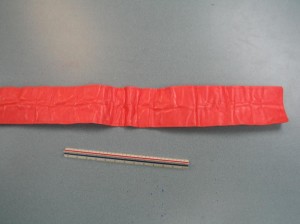Hip injuries such as broken hip or hip fractures often occur due to severe impact, such as from a car crash. Older adults are more prone to hip fractures by falling from heights. People with weak bones, such as the elderly may fracture their hips though just twisting or standing on their leg.
Signs and symptoms
- Severe pain
- Inability to move after the fall
A splint, found in most first aid kits, is an effective tool for immobilizing broken bones. - Incapable of putting weight on the affected side’s leg
- Leg turns outwards on the injured hip’s side
- Shorter leg on the affected side
Treatment
Follow these treatment steps after calling 911:
1. If the person is unconscious, not breathing or doesn’t have a pulse, begin CPR immediately.
2. Protect the hip. Allow the casualty to lie down on his back. Tie the legs together at the knees and ankles
3. Immobilize the leg on the affected side
- Apply a splint, if you are trained to do so
- Secure it with stiff padding–you may use waddled-up towels or blankets. the padding should be placed above the hip and under the knee
- If you do not have any materials, you may keep your hand under the casualty’s knee and your arm over and along the thigh. Your hand should be below the hip or pelvic region
4. Examine the victim for signs of shock. Symptoms and signs of shock include:
- Clammy and pale skin
- Sweating
- Glazed eyes
- Rapid yet weak breathing
- Vomiting
- Dizziness
Courses that Include training in Broken Bones
- Standard First Aid – more information.
- Emergency First Aid – more information.
- Standard Childcare First Aid – more information.
Related Video
http://www.youtube.com/watch?v=J29h4lNFHaI

